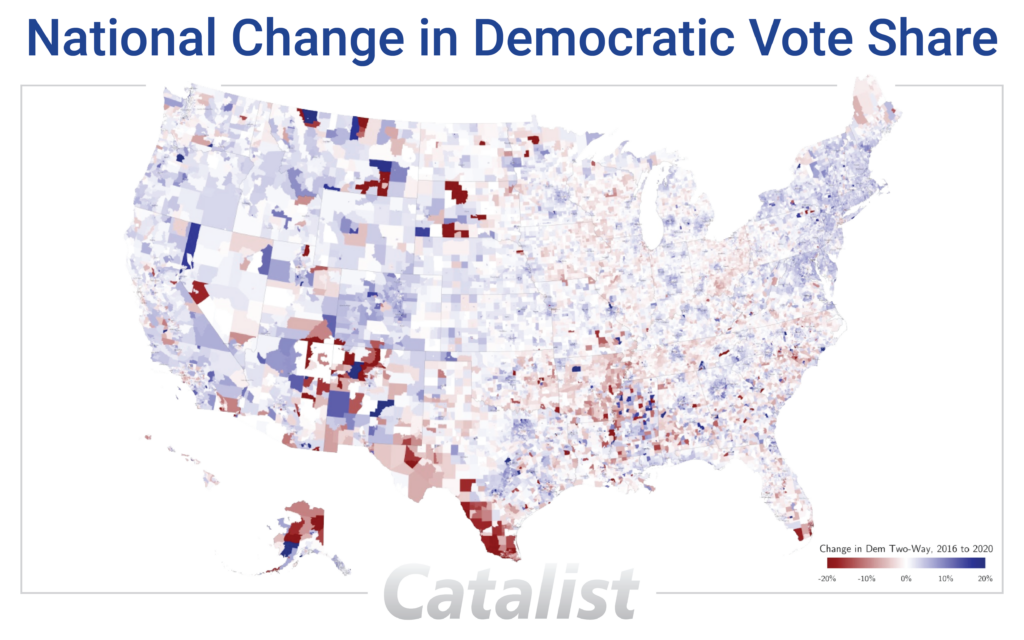What Happened 2024 (May 20, 2025) — Catalist's deep dive on the 2024 general election, including major demographic trends and shifting in turnout and partisanship among frequent vs. infrequent voters.
What Happened 2022 State Reports (October 27, 2023) — As part of its ongoing What Happened series, Catalist offers a deep dive on voting and demographics in Arizona and Michigan as well as an in-depth analysis of how turnout and swing voting patterns can contribute to Democratic vote share.
What Happened 2022 Constituency Reports (October 19, 2023) — Catalist has built on its national What Happened analysis to offer deep dives on specific constituency groups, including Black, Latino, AAPI, youth and women voters.
What Happened 2022 (May 18, 2023) — Catalist's comprehensive voter file analysis of the 2022 midterm, with demographic breakdowns and a comparison of heavily contested and less contested elections.
Election Day Snapshot (November 8, 2022) — A snapshot of absentee and early voting data matched to the Catalist file as of the morning of Election Day, including estimates of vote propensity and vote choice, along along with results from 2022 polling projects.
Kansas Win Mirrors Increased Democratic Engagement in Several Key States (August 9, 2022) — Kansas voters defeated an anti-choice ballot initiative, driven in part by higher registration rates among Democrats and women. This spike in registration was mirrored in several battleground states after Republican-appointed Supreme Court justices overturned Roe v. Wade.
Voter Registration and Party Switching (June 30, 2022) — Each election cycle, Republicans hype their purported gains in party registration. In reality, both parties have been losing registered voters at similar rates since 2018, mainly due to more voters becoming independent.
What Happened in Virginia — (March 23, 2022) The 2021 gubernatorial election in Virginia was marked by high turnout, with disproportionately higher turnout for Republicans, consistent with backlash parties face in odd-year and midterm elections when they control Congress and the presidency.
What Happened in 2020 National Report
Yair Ghitza and Jonathan Robinson | May 10, 2021
The 2020 election was historic and uniquely challenging. Not only was it conducted in the middle of a global pandemic, but it was one of the most intensely partisan elections in recent history. Despite these immense challenges, America’s democratic process survived. Election administrators, poll workers and voters themselves rallied to deliver the highest voter turnout since women’s suffrage and the passage of the Voting Rights Act, with Democrats Joe Biden and Kamala Harris narrowly defeating Donald Trump and Mike Pence in an election that was closer than many analysts expected.
2018 analyses are based on an initial estimate of the 2018 electorate and should NOT be used for comparative purposes now that updated data are available. An archived version of national-level 2018 crosstabs are available here.
In May 2019, Catalist released a full analysis of the 2018 electorate.
Prior to this report, Catalist previewed what data would be available after Election Day and released initial results shortly after the election. Part 1 covers initial estimates of the composition of the electorate. Part 2 covers initial estimates of vote choice among different demographic groups. Catalist also provided an update to data and questions in December 2019.







